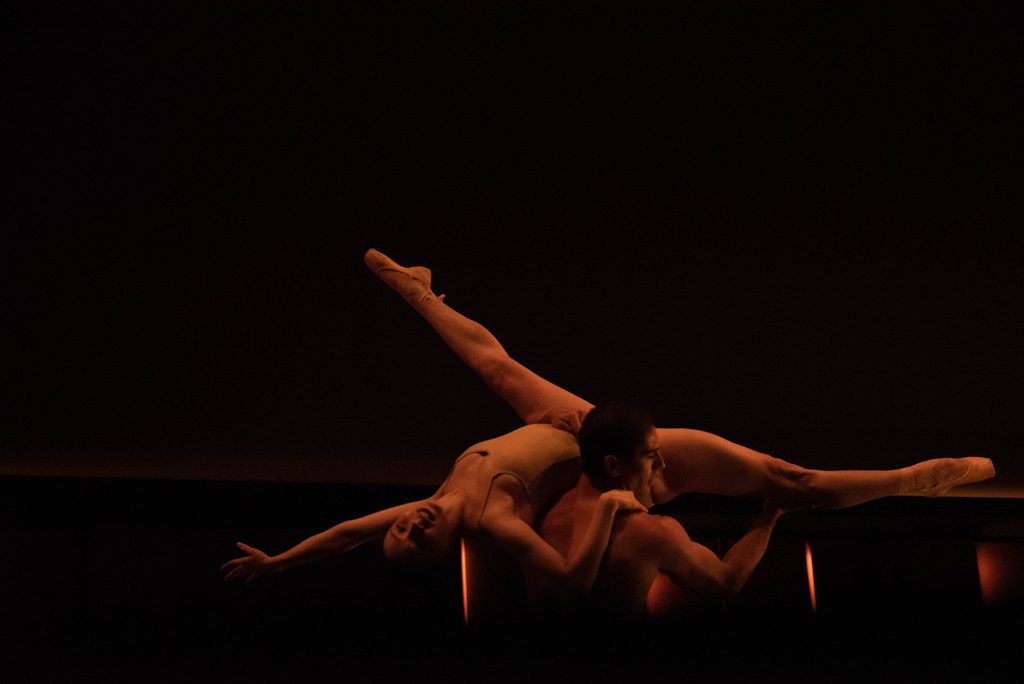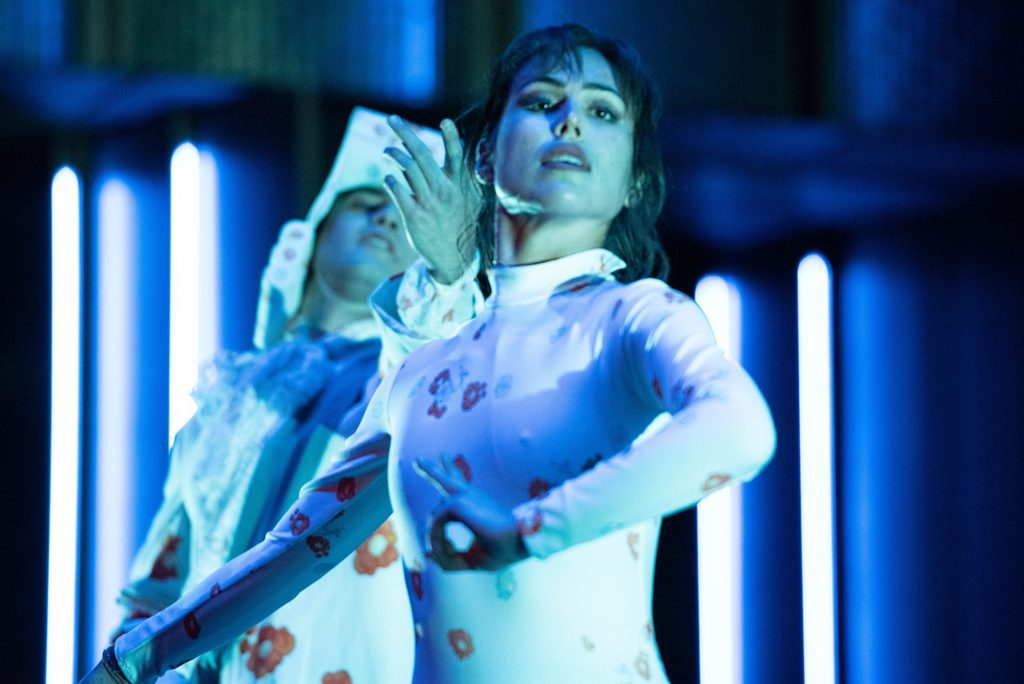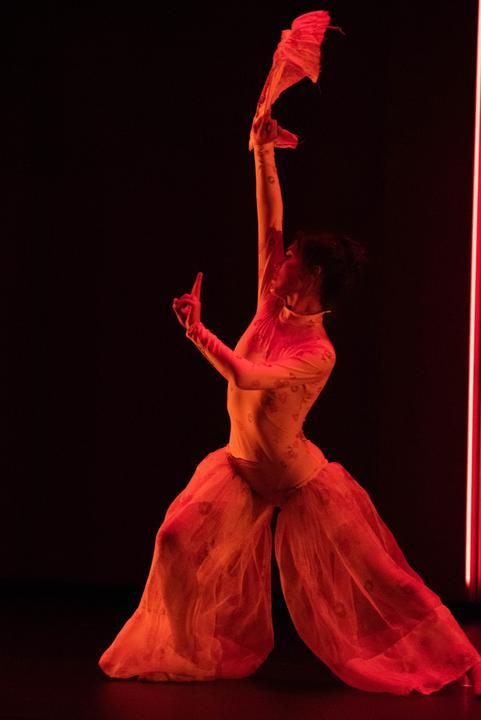The Oakland Ballet Company comes to Carleton
Members of the Oakland Ballet Company brought a night of ballet to Carleton, choreographed by Benedict Distinguished Visiting Professor of Dance and Carleton alum Phil Chan ’06.

On the evening of Sept. 24, 2022, within Carleton’s Kracum Performance Hall in the Weitz Center for Creativity, the brilliance of ballet was wielded to uplift and inspire an audience of Carleton students and Northfield residents. Choreographed by Benedict Distinguished Visiting Professor of Dance and Carleton alum Phil Chan ’06, the performances were the result of a passion born at Carleton and cultivated through a career around the globe. Since graduating from Carleton, Chan has studied baroque dancing, honed his choreography skills and co-founded Final Bow for Yellowface in 2017. Through his organization, Chan works on eliminating outdated and offensive stereotypes commonly found in European ballets that are still being performed on today’s stages. Understanding how audiences have diversified, Chan wants the magic of ballet—an art form he loves—to be accessible and welcoming to all.

In partnership with the Oakland Ballet Company, the show consisted of two separate performances with a small cast made up of Lawrence Chen, Karina Eimon, Logan Martin and Jazmine Quezada. Chan was particularly excited to partner with this company because it allowed him to return to his hometown, where his father still lives.
At 7:30 p.m., Chan took the stage and introduced the first performance: “Amber Waves,” “an improvisational ballet on ‘America the Beautiful’” according to the events calendar. What followed was truly a much more heartfelt and emotional display than such a concise summary could possibly capture. In a pitch black auditorium, the soft drumming of ballet shoes tip-tapping rapidly on the stage echoed throughout the space. Only after a collective air of anticipation spread through the room did the soft glow of warm yellow lights slowly build. An enraptured audience remained silent, allowing each footfall and sliding of silk shoes against wood to be heard with astonishing clarity. Simple leotards the color of each dancer’s skin tone coupled with the minimal lighting emphasized the raw beauty of their dancing. Moving harmoniously, their heavy breathing mixed with the classical score created a very human performance.

After taking a moment to descend from the high of the first performance, the audience was then led on an exploration of a “forgotten ballet”: the “Ballet des Porcelaines,” from the 18th century. Between performances, Chan explained the process of (re)creating this ballet. A charismatic presenter, Chan captured his audience with humorous and engaging storytelling. The music and plot for the “Ballet des Porcelaines” were uncovered in France, but the actual choreography was lost to the past. Chan took this opportunity to reinvent a once racist ballet into a thing of beauty, building off the work he has accomplished through Final Bow for Yellowface. The original plot for the ballet was a prince rescuing a princess from an evil Chinese sorcerer who turned all who crossed him into porcelain. In the ignorant social settings of its debut, this ballet relied heavily on racial stereotypes, such as head- and finger-wagging based on the “nodding pagoda,” a type of porcelain figurine popular at the time. The idea of a Chinese sorcerer hoarding porcelain from European royalty further perpetuated a negative and inaccurate depiction of Chinese culture. Europeans were obsessed with Chinese porcelain, with many wealthy Europeans having “porcelain rooms” where they housed vast collections. Their envy of the craft as well as a desire to colonize the practice was pervasive throughout the ballet. To combat this, Chan worked with other Asian-American artists to reimagine the work.

Chan’s new conception of the sorcerer character was inspired by the Polish king Augustus II the Strong, who once traded 600 men for two porcelain vases. This view of people being equivalent to objects was the perfect example of what made the sorcerer evil. The costuming also aided in Chan’s artistic reimagining, as the designer, Harriet Jung, intentionally drew from time-appropriate porcelain, rather than the image of blue-and-white “china” that the audience may have been thinking of. The delicate orange, green and blue flowers covering cream-colored leotards and stockings made for stunning costumes, and the performers did all the thoughtful preparation justice.
It was an elegant yet passionate performance. Later described by Chan as an “exquisite corpse,” referring to moments in the performance where a performer would be moving their upper body using Chinese dance methods while keeping their lower body rooted in the baroque style, the melding of old and new and Eastern and Western was stunning. With details that were pointed out to the audience during the Q&A portion of the night, such as the princess’ traditional Chinese sword dance sandwiched between moments of traditional European ballet movements, Chan depicted the feeling of being “both, not half,” which many mixed people—myself included—can relate to.